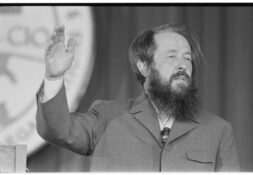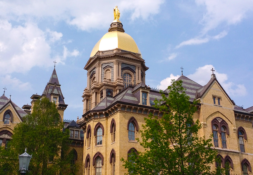Recruiters would rather hire a student from Penn State than Harvard — or so a well-publicized Wall Street Journal survey said earlier this month. After a hard look at the data, though, some are suggesting the survey’s methodology leaves something to be desired.
Using data compiled from 479 of the largest public and private companies, nonprofits and government agencies, the survey ranked Pennsylvania State University, Texas A&M University and the University of Illinois at Urbana-Champaign the top three schools favored by recruiters. Notre Dame was ranked #21.
Lee Svete, director of the University of Notre Dame’s Career Center, cautioned that the Wall Street Journal study focused on quantity, not quality.
“These particular schools that are (highly ranked) have huge student populations, but they never even asked them what their placement percentage is in the article,” Svete said. “They asked (companies) only ‘how many graduates did you hire?’”
When the results are adjusted for student population, Svete said, for example, that only three schools were ahead of Notre Dame.
According to Svete, the study also failed to take other aspects of the recruiting process into account.
“They also didn’t ask the number of companies that recruit (at a given school) — just pure hires,” he said.
Svete drew attention to other aspects of the employment process neglected in the study. A large portion of Notre Dame’s 95 percent success rate for the class of 2009 included graduates who went on to graduate school, medical school and service programs like the Alliance for Catholic Education (ACE) and Teach for America.
But the survey’s emphasis on certain career fields may reflect the path to employment in the difficult economy.
According to Richard Jensen, professor and chair of the economics department at Notre Dame, the importance of so-called “hard skills” — technical skills like those gained in engineering, mathematics and science departments — showed in the survey.
“Fully half of the universities on the list, including Cornell, are land grant institutions,” he said. “These institutions arose from the Morrill Acts of 1862 and 1890, which gave each state a grant of federal land intended to be used to develop educational institutions to focus on teaching agriculture, science and engineering.”
Recently, the National Association of Colleges and Employers released a list of the top employer-fields for 2010 graduates. Accounting, financial services, engineering and education were all in the top ten.
“Each year we ask employers what they are looking for in graduates,” NACE Spokeswoman Mimi Collins said. “The first thing they list is always people with the specific skills for the job. If the position’s an engineering job, they’re looking for engineers. If it’s in finance, they hire a business major.”
Jensen said larger schools were able to offer a larger variety of majors catered to the fields that were surveyed.
“For example, (top-ranked) Penn State offers degrees in health policy and administration, nursing and nutritional sciences. This may be significant in this survey because 9.6 percent of the responding firms were in health care,” he said.
Still, undergraduate population may rule the day. Like Svete, Jensen pointed to the size as a major factor in the survey.
“Firms always have limited recruiting budgets, and they probably have been smaller in the recession,” he continued. “From this perspective, state universities are attractive because they have very large applicant pools.”
Jensen concluded his comments by discussing the extent to which the study’s rankings reflect the value of the education students received.
“I think that this survey has more to say about recessionary hiring practices than the value of an education from a well-respected private university like Notre Dame or the Ivies,” he said. “The important question, which this survey does not address, is, ‘How do Notre Dame students fare against students at these other universities in head-to-head competition?’ My impression is that they do very well in obtaining jobs, in the average earnings from these jobs, and in gaining acceptance into excellent post-baccalaureate graduate and professional programs.”
Claire Gillen has been listening to the album “Cold Roses” by Ryan Adams on repeat for the last week. She’s a very happy person though. Contact her at cgillen2@nd.edu.





